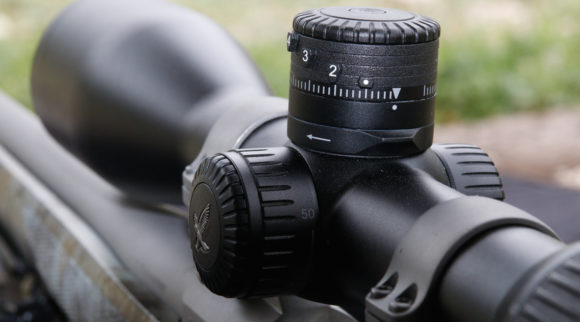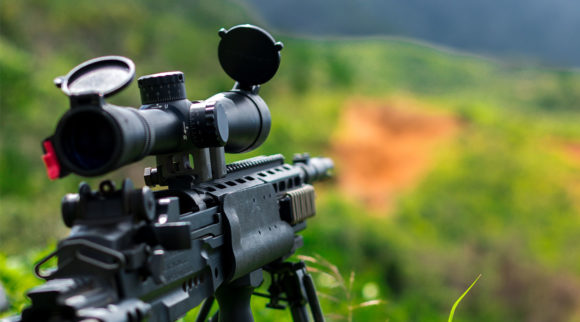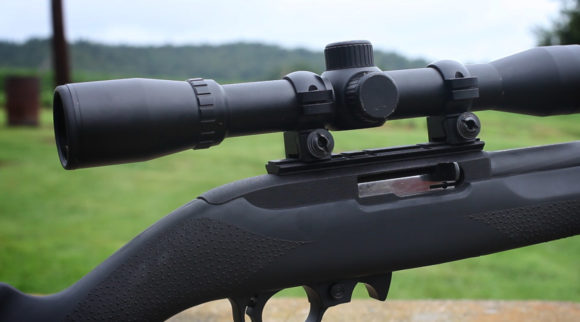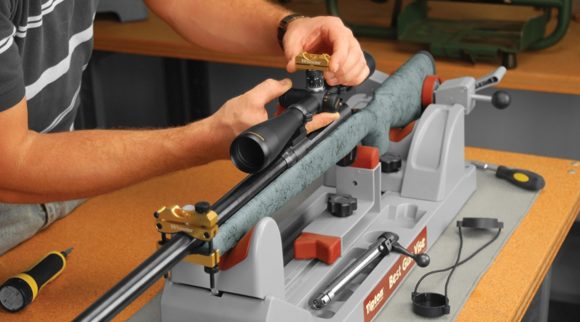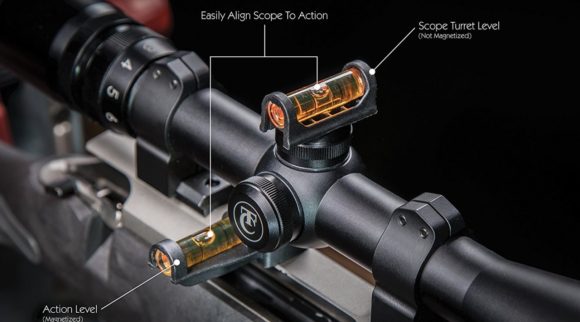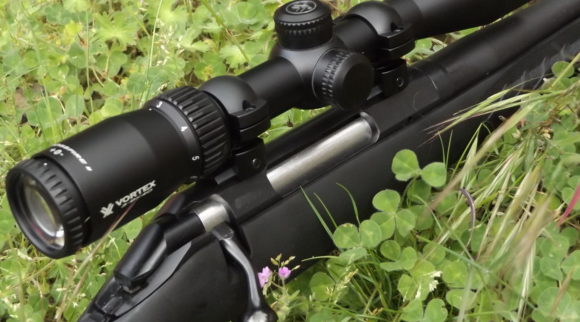How To Zero A Scope: Adjust and Maintain Your Scope

 Zeroing a scope is the process of aligning your optic to the rifle itself. You can’t change the path of a bullet when it comes out your barrel, but you can tweak your scope to track shots more in tune with the gun. Zeroing is all about adjusting the target point (where your scope is showing that the bullet should hit) to where the point of impact is (where the bullet actually strikes).
Zeroing a scope is the process of aligning your optic to the rifle itself. You can’t change the path of a bullet when it comes out your barrel, but you can tweak your scope to track shots more in tune with the gun. Zeroing is all about adjusting the target point (where your scope is showing that the bullet should hit) to where the point of impact is (where the bullet actually strikes).
Without zeroing, you risk missing targets even though you used your scope to aim with precision. The variance between your scope and rifle can often be enough to cost you your prize game. You can easily avoid that by taking the time to zero your scope.
How To Zero A Rifle Scope
There are a couple caveats to get out of the way: zeroing isn’t a substitute for doing a good job when you install your scope. Make sure it’s mounted properly before doing this, and get a professional to help if you’re not absolutely sure what you’re doing. Also, having a subpar optic is going to make things wonky permanently, so make sure you invest in a high-quality eyepiece! Visit our homepage to find current recommendations for the best gun scopes.
- Print a zeroing target. This one’s free and easy to work with. Take it to the range or to your target practice area.
- Once you’re at the range, take some time to get acquainted with your trigger, if this is a new firearm to you. You want to feel comfortable with the mechanism and be pulling smoothly before you start trying to zero.
- Pick a distance to zero (usually, it’s done at 100 yards). Position your printed paper target at that distance, and then get yourself situated with a bench rest or sandbags. You need a stable position to sight-in scopes, so don’t trust your own muscles.
- Start shooting, aiming at the dead center of your paper target. Most likely, your first rounds will hit low and to the left.
- Check to see how far off you were. The squares on the target we’ve linked to measure 1” when printed, which makes it easy to figure this out.
- Use your windage and elevation knobs to compensate. Most rifle scopes have knobs which use MOA increments. Each click equals 1/4 MOA at 100 yards (that’s why working at 100 yards is easiest). Figure out how many squares to either side/up/down you need to adjust, and then turn the knobs accordingly. Each square is roughly equivalent to 1 MOA at 100 yards. So, use 4 clicks per inch.
- Repeat the process with another round. Usually, you can get things zeroed on the first few shots. Don’t worry if it takes two, though!
- Once you’re hitting the bullseye, it’s time to actually “zero” the scope. This means tweaking the knob settings to treat your adjusted settings as the new “zero”. Look in your manual, and see whether you need to unscrew the turret caps or simply pull them out. In any case, you need to align the “0” marker with the line on the back of your turret.
- Replace your turret caps, push the knobs back in, or do whatever your manual tells you to finish adjusting your scope.
- Shoot confidently. Now that you’ve zeroed your scope, you can adjust normally for windage and elevation without having to think about compensating for discrepancies between your optics and firearms!
How to clean a rifle scope
We’ve found that there are a lot of misconceptions around cleaning rifle scopes, so we thought we’d set the record straight. In short, there are very few things you should do to clean your optics. There are a lot more things you shouldn’t do!
Here are the essential things to know about keeping optics spick and span.
Do preventive cleaning. This is far better than trying to get a soiled scope clean when it’s had a long time to build up messes. Give yours a gentle brush-down and wipe the lenses after every hunt, if you can.
Get a good, washable microfiber cloth. People who try and “polish” lenses with old rags and handkerchiefs are begging for trouble! That’s a surefire way to smear debris around and scratch your lens coatings. Use a soft microfiber cloth that you can wash after each use.
Brush off the lens without using pressure. Get the dust and dirt off before you start with the cloth! Gently flick it free with a soft brush, remembering that removing water or dirt quickly is the best thing you can do.
Damage to lens coatings is probably the most common longevity issue, aside from broken glass.These coatings are microscopically thin, so you have to be super careful with them. If you damage the coating, you’ll throw a monkey wrench into your light transmission, clarity, color accuracy, and overall visibility. That’s why it’s important to avoid using any cleaning solutions or subpar cloths to polish lenses!
Most makers have their own kits, and we suggest buying one. They’re all fairly reasonably priced, and will usually have one or two features tailored to your specific optics.
Don’t clean your rifle without putting a lens cap over your optic. Any cleaning supplies you use on your barrel are almost certainly incompatible with your lens multi coatings. Solvents, oils, or copper killer should be kept at a distance.You might think you’re already keeping cleaning supplies well away from lenses, but that may not be true! What often happens is that your bore brush splatters tiny droplets of solvent when you pull it back out the muzzle. They end up on your lenses and eat away at the coatings.
When to use your warranty
Another area where a lot of people go astray is dealing with warranties. We understand why you might be reluctant to deal with the manufacturer and take advantage of coverage, but don’t let that stop you in this case!
While so many products are backed up by crappy warranties with exceptions and pitfalls, most major optics brands have really well-executed warranty coverage. They’re pleasant to deal with, and there are no exceptions in the majority of cases.
Always take advantage of your warranty coverage! Whenever there’s an internal issue, a problem you can’t fix, or a broken component, call your service department. They should sort you out in no time.

